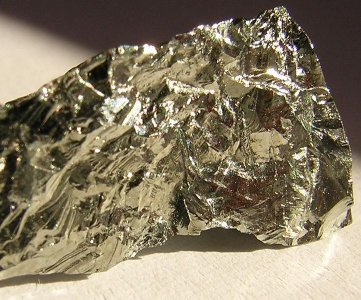Rare Metals

Relevance
Rare metals are conventionally called a group of relatively new or little used metals. Not yet fully mastered their production scale and scope of application. It is a matter of national importance to use rare metals in the defense industry and in the national economy in general.
Geology
Open rare metals in the crust contained in small quantities. However, vanadium, titanium, beryllium, lithium and some others are mined annually in the thousands of tons. Sometimes bismuth and tantalum are found in nature in the form of nuggets. Rich deposits of tungsten, molybdenum and titanium have been discovered. Some ores of the known deposits contain by-product metals such as tellurium, indium, selenium, gallium, and germanium, which are extracted during the processing of the ore. Pegmatite vein minerals also contain rare and rare-earth metals. The process of extracting rare earth metals is a very complex way of processing the ore.
General Characteristics
Rare metals have extremely valuable and varied qualities. Radioactive properties of some rare earth metals are widely used in the nuclear power industry. Using even tiny portions of rare metals in the composition of alloys optimize their quality, such as resistance to cryogenic temperatures, increase the heat resistance.
According to scientists, rare metals can change the production technology of modern industries. When you create a modern technology makes very high demands on the alloys used. Rare metals form the basis of these alloys. The structure, properties and method of application of some alloys based on rare metals for modern technology are of paramount importance. Alloys of tungsten with manganese, for example, are of particular interest to researchers. But to obtain these alloys technologically very difficult, usually using methods of powder metallurgy.
Refractory metals
A special class of chemical elements include metals that melt at high temperatures of at least 1650-1700 ° C. The group of refractory metals is headed by rare metals. All of them have a densely packed atomic structure. High melting point, increased hardness, strength and electrical resistance due to the close interatomic electronic bonds.
Use
The most important use of most refractory metals is in aircraft construction, rocket and space technology, metalworking. Refractory alloys as a construction material find a place in the naval shipbuilding, mechanical engineering, electronics, chemical, electrical and nuclear industries. Hafnium, zirconium, niobium, molybdenum and tantalum possess particularly valuable structural qualities. These metals are characterized by relatively low creep resistance at high melting temperatures.
Disadvantages
Welding refractory materials is difficult because of their high melting point, high affinity for oxygen, hydrogen, nitrogen. These features contribute to the formation of pores in the seams, reducing their plastic properties, leading to the formation of grains when heated. Even a small amount of gas impurities leads to marked changes in properties. The second disadvantage of all refractory metals is the need for various protective coatings against oxidation, at high temperatures. In addition, refractory alloys are not technologically advanced enough. They are poorly deformed, cut and drilled.
Promising areas
The main area is elements of nuclear reactor structures. Refractory alloys can be prospectively used in space technology with nuclear power, in electrical and other devices. For example, in capacitors, nuclear-pumped lasers.
Refractory metals and alloys work in vacuum, neutral and reducing atmospheres, also aggressive and liquid metal environments. Oxidizing atmosphere at high temperature reduces the heat resistance of refractory metals. Therefore they are used with special protective coatings. Today, all hard metals used for calibrating, forging or as cutting tools are made from refractory tungsten, titanium, molybdenum, alloyed with nickel or cobalt. The high hardness of refractory metal carbides provides resistance to wear. However, alloys cast from pure carbides did not give the expected superhard qualities due to excessive brittleness. Such carbides are usually incorporated into sintered hard alloys.
Tungsten and molybdenum are most widely used in electric tubes, electric vacuum and radio engineering industries and are used to alloy tool steel. Vanadium is used in electric vacuum technology and in metallurgy as an alloying element. Zirconium and its alloys are used in the atomic and vacuum industries as a degassing agent and in the production of non-ferrous alloys. Tantalum and niobium are used as electrodes in tube rectifiers and high-power generators. Tantalum is in demand by the chemical industry. Both metals are used as alloying elements for heat-resistant and acid-resistant alloys.
Buy at favorable price
Evek GmbH has a wide range of products from rare and refractory metals in stock. We offer favorable terms for wholesale and retail buyers. Check the prices of rare and refractory metals on our website. At your service experienced consulting managers who are always ready to help with the choice. Products undergo defectoscopic control. Quality is guaranteed by strict compliance with production standards at all stages. Delivery time is minimal. Preferential discounts are available for bulk orders.
